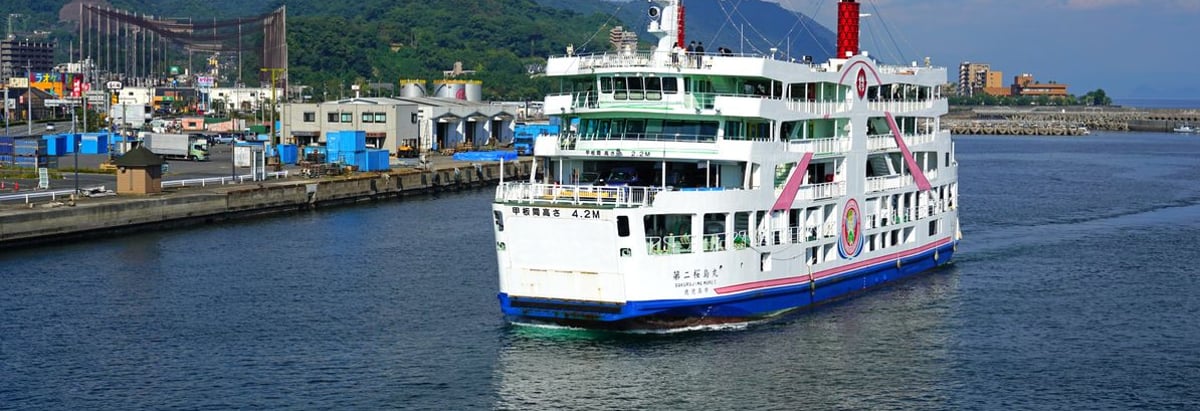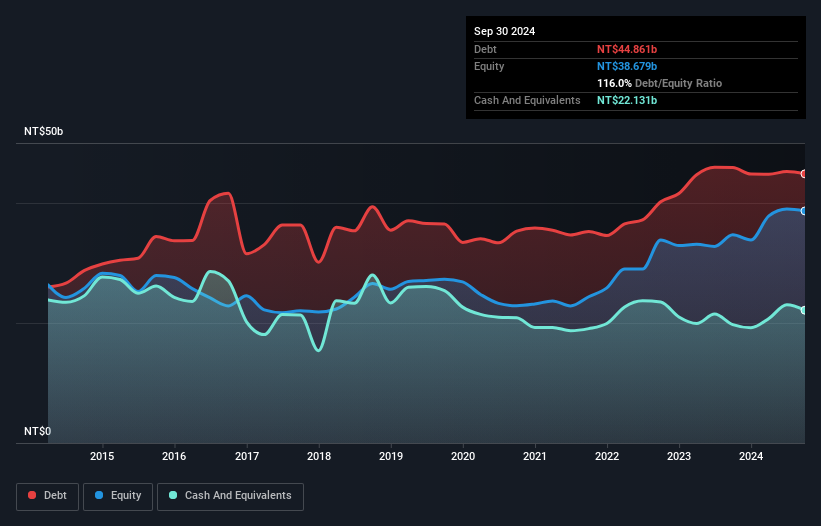- Taiwan
- /
- Marine and Shipping
- /
- TWSE:2606
Does U-Ming Marine Transport (TWSE:2606) Have A Healthy Balance Sheet?

The external fund manager backed by Berkshire Hathaway's Charlie Munger, Li Lu, makes no bones about it when he says 'The biggest investment risk is not the volatility of prices, but whether you will suffer a permanent loss of capital.' It's only natural to consider a company's balance sheet when you examine how risky it is, since debt is often involved when a business collapses. As with many other companies U-Ming Marine Transport Corporation (TWSE:2606) makes use of debt. But is this debt a concern to shareholders?
When Is Debt A Problem?
Debt is a tool to help businesses grow, but if a business is incapable of paying off its lenders, then it exists at their mercy. Ultimately, if the company can't fulfill its legal obligations to repay debt, shareholders could walk away with nothing. However, a more usual (but still expensive) situation is where a company must dilute shareholders at a cheap share price simply to get debt under control. By replacing dilution, though, debt can be an extremely good tool for businesses that need capital to invest in growth at high rates of return. The first thing to do when considering how much debt a business uses is to look at its cash and debt together.
View our latest analysis for U-Ming Marine Transport
What Is U-Ming Marine Transport's Debt?
As you can see below, U-Ming Marine Transport had NT$44.9b of debt, at September 2024, which is about the same as the year before. You can click the chart for greater detail. However, it also had NT$22.1b in cash, and so its net debt is NT$22.7b.

How Healthy Is U-Ming Marine Transport's Balance Sheet?
According to the last reported balance sheet, U-Ming Marine Transport had liabilities of NT$17.4b due within 12 months, and liabilities of NT$29.4b due beyond 12 months. On the other hand, it had cash of NT$22.1b and NT$1.80b worth of receivables due within a year. So its liabilities outweigh the sum of its cash and (near-term) receivables by NT$22.9b.
While this might seem like a lot, it is not so bad since U-Ming Marine Transport has a market capitalization of NT$48.3b, and so it could probably strengthen its balance sheet by raising capital if it needed to. But we definitely want to keep our eyes open to indications that its debt is bringing too much risk.
In order to size up a company's debt relative to its earnings, we calculate its net debt divided by its earnings before interest, tax, depreciation, and amortization (EBITDA) and its earnings before interest and tax (EBIT) divided by its interest expense (its interest cover). This way, we consider both the absolute quantum of the debt, as well as the interest rates paid on it.
With net debt to EBITDA of 2.9 U-Ming Marine Transport has a fairly noticeable amount of debt. On the plus side, its EBIT was 9.9 times its interest expense, and its net debt to EBITDA, was quite high, at 2.9. It is well worth noting that U-Ming Marine Transport's EBIT shot up like bamboo after rain, gaining 89% in the last twelve months. That'll make it easier to manage its debt. The balance sheet is clearly the area to focus on when you are analysing debt. But ultimately the future profitability of the business will decide if U-Ming Marine Transport can strengthen its balance sheet over time. So if you want to see what the professionals think, you might find this free report on analyst profit forecasts to be interesting.
Finally, while the tax-man may adore accounting profits, lenders only accept cold hard cash. So we clearly need to look at whether that EBIT is leading to corresponding free cash flow. During the last three years, U-Ming Marine Transport burned a lot of cash. While investors are no doubt expecting a reversal of that situation in due course, it clearly does mean its use of debt is more risky.
Our View
U-Ming Marine Transport's conversion of EBIT to free cash flow and net debt to EBITDA definitely weigh on it, in our esteem. But its EBIT growth rate tells a very different story, and suggests some resilience. We think that U-Ming Marine Transport's debt does make it a bit risky, after considering the aforementioned data points together. That's not necessarily a bad thing, since leverage can boost returns on equity, but it is something to be aware of. When analysing debt levels, the balance sheet is the obvious place to start. However, not all investment risk resides within the balance sheet - far from it. These risks can be hard to spot. Every company has them, and we've spotted 3 warning signs for U-Ming Marine Transport (of which 2 can't be ignored!) you should know about.
When all is said and done, sometimes its easier to focus on companies that don't even need debt. Readers can access a list of growth stocks with zero net debt 100% free, right now.
New: AI Stock Screener & Alerts
Our new AI Stock Screener scans the market every day to uncover opportunities.
• Dividend Powerhouses (3%+ Yield)
• Undervalued Small Caps with Insider Buying
• High growth Tech and AI Companies
Or build your own from over 50 metrics.
Have feedback on this article? Concerned about the content? Get in touch with us directly. Alternatively, email editorial-team (at) simplywallst.com.
This article by Simply Wall St is general in nature. We provide commentary based on historical data and analyst forecasts only using an unbiased methodology and our articles are not intended to be financial advice. It does not constitute a recommendation to buy or sell any stock, and does not take account of your objectives, or your financial situation. We aim to bring you long-term focused analysis driven by fundamental data. Note that our analysis may not factor in the latest price-sensitive company announcements or qualitative material. Simply Wall St has no position in any stocks mentioned.
About TWSE:2606
U-Ming Marine Transport
Engages in the marine transportation and investment businesses worldwide.
Proven track record average dividend payer.
Market Insights
Community Narratives



